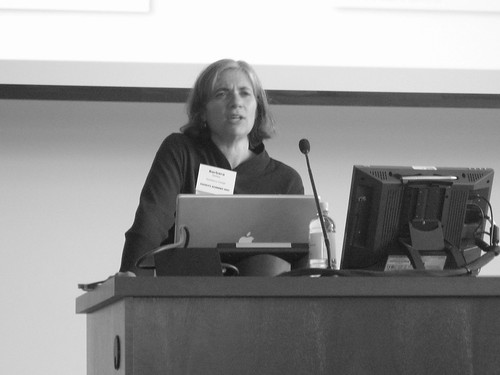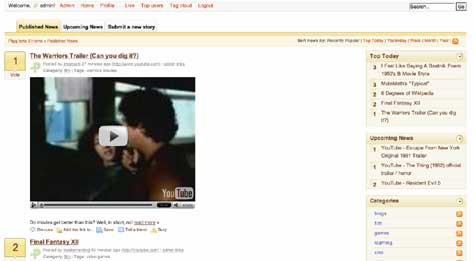Well, I have been furiously putting together my syllabus for the class on Early American Crime Narratives I’ll be teaching this first Summer session, which starts tomorrow! The class will be tracing a series of narratives from the colonial period through the U.S. revolution. More specifically, we will be examining the reformulation of crime and criminality between the 17th and the 19th centuries. The logic of this class comes from the superb work of David Kazanjian: a brilliant scholar, teacher, and person.
The class deals with a lot of different modes of “literature” (i.e., historical, political, popular, etc.) given the fact that it precedes the moment when the idea of a rarefied national literature of the U.S. was established with figures like Emerson, Fuller, Whitman, Melville, Hawthorne, and the like. Most literary anthologies of North and South America are re-imagining themselves along these lines -but for a long time literature in the Western hemisphere centered around writers like Emerson and Whitman, with a preface of Ben Franklin, Washington Irving, and James Fenimore Cooper -often neglecting much of the contemporaneous work from South America and Canada, not to mention the innumerable narratives and histories from the 16th, 17th, and 18th centuries, and lest we forget the ever elided Native American cultural legacy. But I digress, all this is to say that the course will be approaching the literature of crime as a means to examine the space of early America as a prismatic lens for numerous and variegated contact zones (thanks Barbara) of cultures, contexts, and disciplines -in fact, one could argue that early American literature is “always already” (sorry Gardo!) inter-disciplinary- one more reason why it is such a shame it has so little representation as “literature” at UMW 🙂
Ok, but somewhere along the way I was planning on making a point, hmmmm -let me see… Oh yeah, I am planning on having the class write nightly reactions to the work we read on the class blog (one centralized blog for this endeavor). The logic of these reactions to the readings will be in line with what I think Foucault is beginning to trace out in Discipline and Punish, namely that as large historical narratives congeal, they offer the intellectual, student, etc. a series of more generalized categories by which to understand a particular moment of time. For example, I recently listened to a podcast on Victorian Literature and Pessimism from BBC’s “In Our Time.” Much of the discussion focused on Matthew Arnold’s “Dover Beach” as a way to trace the more general historical trends of the mid-nineteenth century Victorian zeitgeist, namely an increasing loss of faith, a concern with the state of hierarchy, the rise of the middle-class gentry (parvenus), fear of alternative political systems (framed often as anarchy) -but all of these ideas are so general they can be read into just about any Western literature of the last four hundred years!
But thankfully, many of these anxieties of the day can be further contextualized within the historical effects of the industrial revolution or the intellectual impact of Darwin’s theories on evolution, or even Hegel’s philosophy of dialectics, etc. Now all of these things make a lot of sense, especially when framed by scholars as a series of key intellectual developments and social/historical phenomenon during a specific period of time. But, what I started to realize today while re-reading Foucault’s Discipline and Punish, is that this more generalized historical mapping of ‘key concepts’ often limits our approach to any given time period to these more generalized categories. Much like most of the survey approaches to themes and topics within literary periods, often packaged neatly in centuries with some over-arching ideas about faith, throw in some unrequited love, peppered with aesthetic principles, a smidge of historical context, a large portion of biography, and a couple of literary terms for good measure.
Now I am not saying this is wrong, nor do I fail to see the value of such intellectual categories for organizing and cataloging information and relevance -or even for testing or paper writing. However, it might also be important to keep in mind that they are systems and that perhaps they offer up a series of pre-fabricated approaches to a series of questions that might be more generatively approached from a perspective that doesn’t assume the preconditions of historical/literary generalizations. That is the point of most original research, in fact, start with the particular and dig your way out somehow to add to the conversation -yet how much harder is this when the tradition is re-framed for you consistently in various time periods according to the same general principles?
Well, here’s where I loop back to Foucault and eventually my class. The theoretical premise of Discipline and Punish does not necessarily depend upon the common historical and thematic explanations of the changing nature of punishment in Europe during the 18th and 19th centuries, i.e., public execution and bodily torture was barbarous and necessarily leads to more civilized modes of incarceration, reform, and rehabilitation (think Clockwork). Rather, he begins by asking the question of whether or not the changing nature of penality in the Western world from the late 18th century through the 20th century suggests a shift in the very definitions of crime and criminality -which, at its root, allows for a juridical abstraction of the subject. In other words, a re-formulation that affords the definition of crime, guilt, and punishment a much less direct and bodily conception of punishment towards a much more indirect, abstracted, and pervasive framing of the crime in relationship to one’s “soul”. And with such a change does the very nature of judgment change as well? Does judgment now move beyond the specifics of “Who committed it?” or “What law do we enact?”
According to Foucault, we move into a series of questions surrounding, what he terms the “scientifico-juridical complex,” or the space wherein crime and guilt intersect with a large number of different and competing ideas of expertise wherein the legal process is judging something other than the crime, but rather the mental state, intentionality, circumstantial evidence etc. All of this may seem natural and logical given the way in which judicial power must account for more complexities within a society, yet the side-effect is the absence of a referent point for responsibility for judgment or punishment. All judgment is directed in terms of a cure and hence becomes entangled with various fields of knowledge, technology, and science that effectively distributes and changes the power to punish while simultaneously displacing the point at which judgment is conferred.
Now whether or not you agree with this is certainly fodder for the comments I look forward to. However, the point this reading brought me to today was that Foucault’s conceptual framework is not dependent upon the general categories of a historical period or literary movement. Rather, he is using the historical archive to closely read the subtle discrepancies in descriptions and definitions surrounding crime over a two hundred year period to make some more specific claims on its changing nature. This is literary close reading at its best! This is a means to approach and challenge the general, categorical descriptions of a historical moment from within the archive.
Now, all of this got me thinking about the problems with more general categories on blogs and the ways in which we might be able to imagine categories on posts as very specific, close readings of our content. Or, even cooler, our content as close readings of our quite specific categories we choose for each post. Point being, at the end of any given course you have a number of core ideas that you are coming away with, how about asking students to frame and author those “core ideas” as categories (or tags) and explain why they choose these two or three categories to explain Foucault’s Discipline & Punish or Daniel Williams introduction to Pillars of Salt or Patience Boston’s crime narrative, etc. The idea here is to have an active, reflective and conscious series of writing exercises designed around the process wherein they are asked to both closely read and define (categorize? tag?) something they have thought about before they write it. One possibility is to encourage the focus on the particulars of a work (perhaps this may be a bit closer to the idea of a tag than a category) while the notion of categories can expand or contract according to the ideas that we want to fill them with. Additionally, as they do these writing exercises the categories/tags they define for each response will begin to proliferate, cross pollinate, and reproduce one another. As a nice feature, these category tags can be visualized through a weighted tag/category cloud (thanks D’Arcy), offering a collective visual index that represents how they are framing their ideas around a series of texts. I don’t know, it’s kind of a wild way to think about category tagging not so much as an after-thought or general repository for ideas, but as a specific act of declaratively defining the way in which they closely read the works and write about them.

 The recent discussion and commodification of
The recent discussion and commodification of 




